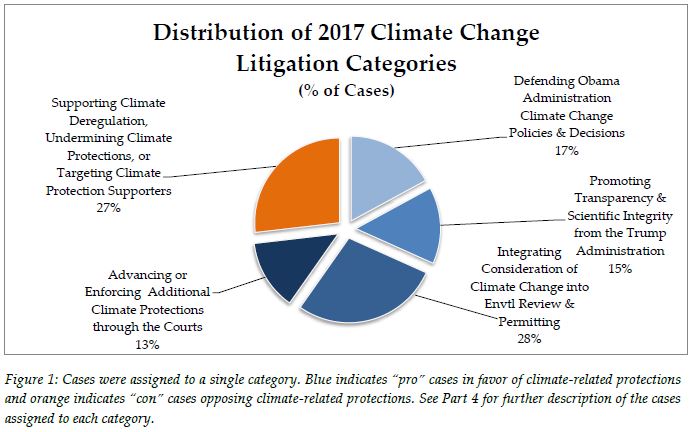On April 9, 2024, the European Court of Human Rights (ECtHR) issued its first-ever findings concerning climate change. This post, part of a series on the ECtHR decisions, discusses Duarte Agostinho and Others v. 32 Member States. The case was brought by six youth applicants from Portugal, who alleged breaches of Articles 2, 3, 8 and 14 of the European Convention on Human Rights (ECHR) based on the present and future impacts of climate change, including heatwaves and wildfires, caused by the respondent States’ greenhouse gas (GHG) emissions.
Like the landmark decision in the KlimaSeniorinnen case, which was also handed down on April 9, Duarte Agostinho shed light on who can bring climate cases to Strasbourg. In Duarte Agostinho, the clarification predominantly concerned the territorial scope of ECHR protection, with the Court finding that climate mitigation cases of this kind cannot be brought by individuals located extraterritorially. This post analyses the Court’s findings and reflects on what ‘success’ means in these kinds of climate cases.
The Court’s Findings
Extraterritorial Jurisdiction: The Demand for a Special Test
The case originally concerned 33 Council of Europe Member States (including Russia, which is no longer a Member State, but against which the case was continued, and Ukraine, against which it was dropped by the applicants in light of the ongoing Russia-Ukraine war). Because the applicants live in Portugal, the claim against that State was territorial; against the others, it was extraterritorial. A key question in the case was accordingly whether the respondent States other than Portugal could be held responsible for the climate-related impacts that their emissions contributed to, but that were felt overseas. Here, the Court drew parallels to its migration-related case-law (M.N. and Others v. Belgium, on visa applications submitted at embassies abroad). In doing so, it agreed with the applicants that this case did not fit the Court’s established models of extraterritorial jurisdiction under Article 1 of the ECHR (which is primarily territorial, except when (i) a State exercises “effective control” outside its borders; (ii) its agents have power and control over a person abroad or (iii) more rarely, there are specific procedural elements to a case).
The Court then examined the applicants’ argument for the creation of a special test for jurisdiction based on underlying principles and the exceptional circumstances concerned. In . Therefore, the Court considered whether a special approach was also needed here, for extraterritorial jurisdiction.
In its analysis, the Court agreed with the applicants on certain points, namely that: (i) climate change has special features; (ii) States have ultimate control over public and private emissions on their territories; (iii) emissions have adverse effects on the rights of people outside a State’s borders “and thus outside the remit of that State’s democratic process” (para. 193); and (iv) climate change is a problem “of a truly existential nature for humankind, in a way that sets it apart from other cause-and-effect situations” (para. 194).
However, the Court was not convinced to revolutionize its approach to extraterritoriality, and rejected several other arguments made by the applicantsIn particular, it found that (i) jurisdiction had to be considered separately from the merits; (ii) there was no particular link to any respondent State apart from Portugal; (iii) capacity to impact rights abroad was insufficient to establish jurisdiction; (iv) EU citizenship was irrelevant in this regard; (v) “the Convention is not designed to provide general protection of the environment as such” (para. 201), and (vi) its protection is based on principles of territoriality and subsidiarity.
As Rocha has discussed in this blog symposium, the Court accordingly rejected the idea of a new test for jurisdiction based on control over Convention interests, rights enjoyment, or the source of harm. Based on an extensive collage of past cases, it found that jurisdiction “requires control over the person himself or herself rather than the person’s interests” (para. 205). Any other conclusion would cause “a critical lack of foreseeability” and allow cases from “anyone adversely affected by climate change wherever in the world he or she might feel its effects” (para. 206).
The Court expressed its concern that the applicants’ arguments “would turn the Convention into a global climate-change treaty” (para. 208). This was considered untenable, and the Court refused to follow the more expansive approaches of other human rights bodies (specifically the ights, as followed by the Committee on the Rights of the Child in Sacchi et al. v. Argentina et al.), declaring them “based on a different notion of jurisdiction” (para. 212). The Court also noted that the extension of jurisdiction sought could not be limited to the Convention’s legal space (its “espace juridique”). As a result, the claims against all of the respondent States save Portugal were declared inadmissible.
Exhaustion of Domestic Remedies: Foregrounding the Role of Domestic Courts
While the ECtHR determined that it had jurisdiction to hear the complaint against Portugal, it likewise dismissed that complaint. It did so because the applicants had not exhausted the domestic remedies. Here, the Court reiterated well-trodden case law, noting its subsidiary role and the fact that the ECtHR is not a court of first instance. While applicants are not required to exhaust remedies that are ineffective, futile, or inadequate, and although there is some flexibility here, mere doubts about the effectiveness of a remedy are insufficient to suspend the exhaustion rule.
Applying these standards, the Court concluded that the applicants should have exhausted the remedies offered by the Portuguese legal system. It noted that Portugal recognizes an explicit and judiciable constitutional right to a healthy environment, and that domestic law allows for actio popularis cases. Using the domestic remedies would have allowed the Portuguese courts to examine the case themselves, allowing the Court to benefit from their assessment of the facts and the law. The impact of the failure to exhaust domestic remedies was also reiterated in a brief obiter dictum on victim status, where the Court noted that the lack of domestic rulings deprived it of clarity about the applicants’ situations.
Contextualizing the Case: Whither Global Climate Justice?
Savaresi, Nordlander and Wewerinke-Singh have argued that the Court’s findings on extraterritoriality here “risk limiting access to justice for those most vulnerable to climate harms.” While I have no qualms in agreeing with this, I will explore two arguments here: one concerning the perceived inevitability of this finding, and the second more closely investigating the global versus domestic orientation of the Grand Chamber’s climate rulings.
No Such Thing as Inevitability
The outcome on extraterritoriality in Duarte Agostinho has been described as inevitable. And certainly, it is consistent with existing case law. The alternative would have represented a radical departure from existing approaches and could have paved the way for climate cases from all around the world to come to Strasbourg, inundating the Court’s docket. Still, it is important to recall that the Court’s Grand Chamber is not in the business of considering cases that are “inevitably” inadmissible. Such cases are subject to summary proceedings, and three other climate cases have already met this fate, meaning that they were declared inadmissible by single judges or committees without any findings being made. Neither should we read anything into the lack of separate opinions in this case – these are in fact not possible in inadmissibility decisions.
Looking to the future, one has to wonder whether there are no procedural innovations that would have been available to admit this case while simultaneously preventing a global flood of follow-up cases. An analogy to the creation of the pilot judgment procedure to manage the Court’s docket may have been able to serve as an inspiration. After all, as Raible has argued, absent coherent and ambitious action from States on the domestic and international level, human rights bodies may need to devise new and potentially “non-ideal” solutions – which is essentially what happened in KlimaSeniorinnen as concerns victim status. In short: while the Court’s decision in this case was predictable, it was not inevitable.
The Professed Failure of the Court to Ensure Global Protection
In this case, the Court refused to follow the approach of the IACtHR (as echoed by the CRC) along with long-standing academic discussions about the disjointed state of Article 1 ECHR. Rocha, citing Murcott, Tigre, and Zimmermann, accordingly describes Duarte Agostinho as passing up “the” opportunity for the ECtHR to learn from the Global South and revise its understanding of extraterritoriality.
These first cases will inevitably be followed by more climate rulings from the ECtHR. To understand what is at stake, it must be reiterated that climate change is a fundamentally inequitable phenomenon. This is certainly true for the disparate impacts on vulnerable communities in countries facing development constraints. It is also well-established that some parts of Europe will be more severely and quickly affected by climate change than others (evocative of Doelle and Seck’s idea of a “south within the north”). It has likewise been scientifically proven – and reiterated by the Court in KlimaSeniorinnen – that “populations at ‘highest risk’ of temperature-related morbidity and mortality include older adults, children, women, those with chronic diseases, and people taking certain medications” (para. 510). Corresponding cases are sure to come before the Court and, in fact, are already pending. And currently, the Court’s Grand Chamber rulings only scratch the surface of these inequities, rendering this case a distinct – if understandable – disappointment.
However, the Court’s approach in Duarte Agostinho is coherent with the overall vision of climate litigation that the Court presented on April 9th, and must be understood in light of the KlimaSeniorinnen judgment, where the Court found that States must create and implement an adequate regulatory framework to control emissions. In KlimaSeniorinnen, like Duarte Agostinho, territorial scope was a major concern for the Court. The Court in KlimaSeniorinnen required associations and their members to have a link to the jurisdiction in question in order to have victim status in mitigation cases (para. 502), again limiting claims from abroad. At the same time, KlimaSeniorinnen shows that the Court is willing to review emissions abroad, including those embedded in trade and imported into Switzerland (para. 287). Despite noting that these emissions contain “an extraterritorial aspect,” the Court considered them reviewable given their impacts in Switzerland.
The rulings show that, while understanding the need for ECHR-based review, the Court is restrictive concerning who can contest climate policy. This is justified by the fact that climate change potentially affects everyone, and this is understood as equivalent to an actio popularis (falsely, I would argue, if we understand an actio popularis as an abstract form of review). At the same time, we should not lose sight of the fact that a binding ECHR obligation to regulate and mitigate GHG emissions, understood comprehensively to include embedded emissions, is a key step towards ensuring a liveable climate, and has global benefits.
The Breadth of Ambition, and Understandings of Success
We may not readily describe Duarte Agostinho as a success. But it does offer an excellent opportunity to clarify what we mean by ‘success’ in this context. Arguably, this depends on our expectations – whether that’s to generate attention, trigger mobilization, seek judicial engagement with an issue, clarify the law, or pursue a given outcome, among others.
Some expected Duarte Agostinho to be inadmissible from the beginning. For example, Milanovic has argued that the applicants were “bound to fail, so much so that pursuing this litigation was potentially counterproductive.” In response, I would argue that the latter (counterproductivity) does not necessarily follow from the former (inadmissibility), and that a case can be inadmissible and still have striking impacts (with Sacchi as a key example).
After this ruling, we know that these impact-based arguments about territorial jurisdiction will not fly in Strasbourg, creating legal clarity – arguably a type of success. In any case, this knowledge is not a setback. It tells us how far the Court is willing to go under current circumstances, enabling litigants to shape future cases accordingly, and it provides input for ongoing discussions about the proposed additional protocol to the ECHR recognizing a human right to a healthy environment.
In addition, it should be noted that – as part of the Grand Chamber trio of climate cases – Duarte Agostinho presented ambitious arguments about States’ fair shares and the harmonization of human rights law with the international climate regime. The submissions made in this case are a resource for other litigants, they are carried forward in part by the KlimaSeniorinnen’s submissions, and they pushed the legal imagination around what was possible here, perhaps making it more feasible for the Court to make its landmark finding in KlimaSeniorinnen. These can all be understood as their own kind of success, meaning that success is subjective – at least to a degree.
Conclusion
The first wave of climate rulings from Strasbourg has clearly established that, while the Court is willing to hear climate cases, it will do so under specific circumstances that allow it to control who can bring climate cases, and from where. This is a pragmatic solution that balances institutional needs against demands for climate justice. By refusing to create a new test for extraterritorial jurisdiction in climate cases, and insisting on the exhaustion of domestic remedies, Duarte Agostinho is a key part of this pragmatism.

Corina Heri
Corina Heri is a postdoctoral researcher at the University of Zurich.




